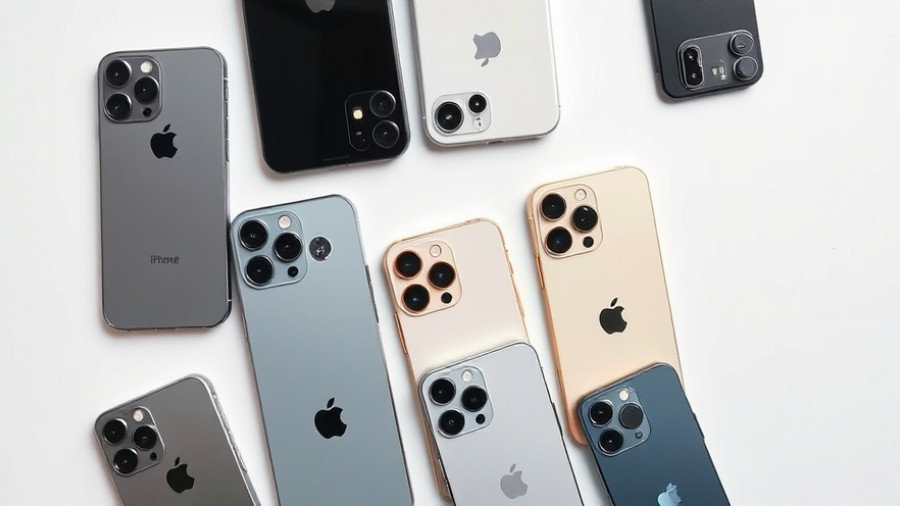
The Journey of iPhone: From Revolutionary Beginnings to Today
Since its inception in 2007, the iPhone has undergone remarkable transformations, evolving from a simple phone to a multi-functional device that fits in our pockets. The journey, marked by a series of innovative releases, reflects Apple’s commitment to enhancing user experience and integrating cutting-edge technology. This article takes a closer look at every major release, highlighting critical advancements over the years.
2007: The Dawn of a New Era
Announced on January 9, 2007, and released on June 29, the original iPhone was revolutionary with its 3.5-inch display, a modest 2MP camera, and 16GB of storage. In a world dominated by physical keyboards, the iPhone introduced an intuitive touchscreen interface, instantly altering consumer expectations for mobile devices. The idea of a "widescreen iPod, a revolutionary mobile phone, and a breakthrough internet communicator" was encapsulated within this single device, setting the stage for future innovations.
Expanding Boundaries: The First Iterations (iPhone 3G and 3GS)
Just over a year later, Apple released the iPhone 3G on July 11, 2008. This iteration introduced 3G connectivity and the App Store—a game-changer that opened the floodgates for third-party app developers. The 3GS followed in June 2009, enhancing performance with more storage and improved camera features. The widespread acceptance of these models solidified Apple's footing in the smartphone market.
Defining Features: New Horizons with the iPhone 4
The launch of the iPhone 4 on June 24, 2010, marked a major aesthetic and technical shift. It’s the first model to feature a Retina display, dramatically enhancing visual clarity. Alongside a 5MP camera and a hefty design overhaul, which brought glass and stainless steel into the mix, the iPhone 4 represented a sophisticated upgrade. Even amidst the "antennagate" controversy, the phone sold in record numbers, proving that Apple could weather a storm.
Siri-ously Smart: The iPhone 4S and 5 Introductions
In October 2011, the iPhone 4S debuted, introducing Siri—a voice-activated assistant that changed user interaction with technology. The following year, the iPhone 5’s 4-inch screen and upgraded internals paved the way for rapid advancements in connectivity and camera technology. These releases set a standard for smartphones, showcasing the potential for seamless integration of advanced technology into everyday life.
Creating Choices: iPhone 5S, 5C, and Beyond
2013 saw the introduction of the iPhone 5S and 5C, the latter featuring a more vibrant aesthetic aimed at a younger audience. The 5S not only improved photographic capabilities with Touch ID but also set an industry standard for biometric security in devices. As smartphone competition heated up, Apple began diversifying its offerings to appeal to different market segments.
The Big Screens: iPhone 6 Series
With the launch of the iPhone 6 and 6 Plus in September 2014, Apple acknowledged the rising consumer demand for larger screens. This move was complemented by the introduction of Apple Pay, which seamlessly integrated mobile payments into consumers' everyday lives. However, the "bendgate" issue sparked discussions on design ethics, forcing Apple to carefully weigh aesthetics against practicality.
Innovating with Features: From iPhone 6s to the iPhone 12 Series
Each subsequent iPhone release brought enhancements, from the dual-camera setup in the iPhone 7 Plus to the stunning OLED displays in the iPhone X. The 2020 iPhone 12 series further elevated Apple’s narrative with 5G compatibility and MagSafe technology, which created a new accessory ecosystem. This strategic shift emphasized the importance of connectivity and user-centric design.
Recent Developments: iPhone 14 to 17
The iPhone 14 series, launched in September 2022, continued the trend of innovation with advanced camera features and safety enhancements like Crash Detection and Emergency SOS via Satellite. The upcoming iPhone 17 models promise to deliver even more substantial technology jumps, solidifying Apple’s place in the competitive landscape of smartphones.
The iPhone Legacy and What Lies Ahead
As we look ahead to the iPhone 16e and the IPhone 17 slated for 2025, it’s clear that the iPhone’s legacy is defined by relentless innovation and an unwavering commitment to improving user experiences. With a history steeped in progress, Apple's latest offerings promise to continue evolving, especially in areas like AI integration and sustainability in technology.
Whether you’re a loyal fan or a curious onlooker, the iPhone journey is a reminder of the incredible pace of technological evolution—and just how much these pocket-sized devices have changed our world. So, keep an eye out for what’s next in this saga, because if history is any indication, it’s going to be exciting!
 Add Row
Add Row  Add
Add 




Write A Comment